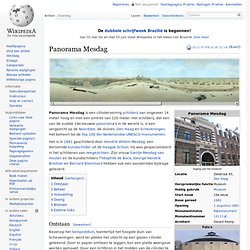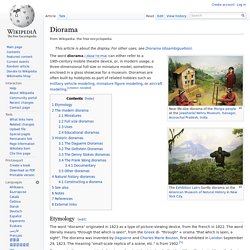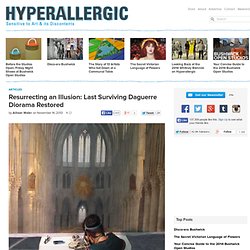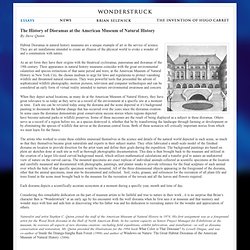

On the dune of the Panorama Mesdag. File:The Ruins of Holyrood Chapel (Louis Daguerre), 1824 (Google Art Project).jpg. [Cornell Univ. from McGraw Tower embracing 360 [degrees], cyclorama view of] Panorama Mesdag. Ontstaan[bewerken] Nadat alle voorbereidingen voltooid waren, kostte het Mesdag en zijn assistenten nog vier maanden om het kunstwerk in te schilderen.

Théophile de Bock richtte zich vooral op de lucht en de duinen, Breitner schilderde de cavalerie die op het strand aan het oefenen is en Blommers was verantwoordelijk voor de moeder met haar dochter die achter de afscheiding toekijken. Sientje Mesdag schilderde samen met Breitner het dorp Scheveningen. Mesdag zelf hield zich bezig met de boten en de zee. Op het panorama heeft Mesdag zijn vrouw Sientje geschilderd in plaats van een handtekening wat gebruikelijk is op panoramaschilderijen.
Beheer[bewerken] Mesdag heeft het schilderij in eerste instantie in opdracht gemaakt voor een Belgisch bedrijf. Huisvesting[bewerken] Op woensdag 23 februari 2011 werd door oudminister Brinkhorst en zijn kleinzoon Claus-Casimir de eerste steen gelegd voor de uitbreiding van Panorama Mesdag. Web.mit.edu/uricchio/Public/pdfs/pdfs/A _Proper Point of View_ MSW.pdf. Museum Studies: An Anthology of Contexts.
Digitalcommons.calpoly.edu/cgi/viewcontent.cgi?article=1071&context=socssp. Natural History. VSA-a0a5c6-a_5730. VSA-a0a4w5-a_5730. Diorama. The word diorama /ˌdaɪəˈrɑːmə/ can either refer to a 19th-century mobile theatre device, or, in modern usage, a three-dimensional full-size or miniature model, sometimes enclosed in a glass showcase for a museum.

Dioramas are often built by hobbyists as part of related hobbies such as military vehicle modeling, miniature figure modeling, or aircraft modeling. [citation needed] Etymology[edit] The word "diorama" originated in 1823 as a type of picture-viewing device, from the French in 1822. The word literally means "through that which is seen", from the Greek di- "through" + orama "that which is seen, a sight". Daguerre's diorama consisted of a piece of material painted on both sides. The modern diorama[edit] The current, popular understanding of the term "diorama" denotes a partially three-dimensional, full-size replica or scale model of a landscape typically showing historical events, nature scenes or cityscapes, for purposes of education or entertainment. Encyclopedia of Nineteenth-Century Photography. Foundation Grant Helps Restore Daguerre’s Final Illusion. Portrait of Louis-Jacques-Mandé Daguerre, 1848, Charles Richard Meade.

Hand-colored daguerreotype, 6 3/16 x 4 1/2 in. The J. Paul Getty Museum, 84.XT.953 Fascinated by nature of light and best known for his invention of the daguerreotype, Louis-Jacques-Mandé Daguerre also was an inventor and painter. He created a number of unique paintings in the early 1800s which he dubbed “dioramas”—scenes reproduced on semi-transparent fabric illuminated by cleverly devised light reflection, transmission, and refraction techniques. Since 2007, the town of Bry-sur-Marne, located on the east bank of the river Marne outside Paris, has been working to conserve the final and only remaining example of a diorama by Daguerre still in existence today, and a grant from the Getty Foundation has helped make it possible.
Made for the church of St. The effect of daylight (by reflection) on the canvas when lit from the front. Nighttime effect (by refraction) when the canvas is backlit. Resurrecting an Illusion: Last Surviving Daguerre Diorama Restored. Conserving the last surviving Louis Daguerre illusion in Bry-sur-Marne, France (courtesy of the Office of Mayor Spillbauer of Bry-sur-Marne) Louis Daguerre may have his name most linked to the groundbreaking photographic process he created — the daguerreotype — but the French inventor hardly stopped there with his experiments with imaging.

In 1822, he also invented the diorama, and although he exhibited them around France and England, only his last still survives. The Saint Gervais-Saint Protais church in Bry-sur-Marne, which houses Daguerre’s last surviving diorama, and the location of the painting in the church. (via daguerre-bry.com) However, even that diorama almost didn’t make it to the 21st century. Wonderstruck. Habitat Dioramas in natural history museums are a unique example of art in the service of science.

They are art installations intended to create an illusion of the physical world to evoke a wonder of and a communion with nature. As an art form they have their origins with the theatrical cycloramas, panoramas and dioramas of the 19th century. Their appearance in natural history museums coincides with the great environmental calamities and species extinctions of that same period and were, at the American Museum of Natural History in New York City, the chosen medium to urge for laws and regulations to protect vanishing wildlife and threatened natural resources.
They were powerful tools that proceeded the advent of sophisticated wildlife photography, motion pictures, television and computer technologies and can be considered an early form of virtual reality intended to nurture environmental awareness and concern. Naturalist and artist Stephen C.